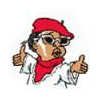A Guide to HTML Development for Beginners
Published in Business Articles
HTML is used by nearly 93% of all websites. If you have an interest in building web applications or site development, you need to learn HTML.
You can take these skills and apply them in a variety of ways. You can test websites, provide tech support, develop web applications, or build websites from top to bottom.
Learning HTML and developing your first HTML projects are possible. Read this HTML development guide to learn how to get started and grow your skills.
1. What Is HTML?
HTML stands for Hypertext Markup Language. HTML uses tags to help you provide a structure for your content. Each tag has an opening tag and a closing tag. Anything in the middle is the content where the tag applies.
For instance, if you want to make a word bold, you can use HTML to do that using the <strong> tag or <b> tag. It would look like <strong> this. </strong>
You might sense a pattern here, where the tags are enclosed by a greater than and less than sign.
HTML is used to build websites. It was the main programming language for web browsers and sites in the early days of the internet.
HTML is still used for web development, along with JavaScript and PHP. HTML plays an important role because HTML code tells search engines what your website is about.
Without that context, your site can rank in search results.
2. Why Do You Want to Learn HTML?
When you’re learning HTML, you want to get a clear picture as to why you want to learn the language. There are a lot of advantages to learning HTML.
For starters, it’s an easy programming language for beginners to pick up. It’s also the backbone of other programming languages.
Understanding why you want to learn HTML helps you develop learning goals. You could want to learn HTML to build web pages.
You can start with learning how to insert a table into a web page using HTML. You progress your learning to use CSS and Schema. Each goal is a stepping stone to make you a better developer.
3. Where to Learn HTML Development
Where do you begin to learn HTML? That’s actually an easy question to answer because there are so many learning resources available.
There are courses that you can take at your local community college. Online boot camps offer HTML development classes for beginners.
If you prefer to learn about web design and development from books, check out Jon Ducker’s work. He covers both topics in his books.
Of course, there’s always YouTube. The only caveat here is that everyone posts videos thinking that they’re experts.
There are some videos that may teach you bad HTML development habits and skills. Research the source of the information before you dive in.
4. Pick Projects to Work On
You can’t be an HTML developer without some projects under your belt. There are various ways you can apply your new HTML skills.
You can start by building a static web page, such as a portfolio site. For your next project, add a form to that page. Then create a landing page.
Continue to choose projects that challenge you and enhance your coding skills. One project you can work on is SEO for your websites.
This is an important skill if you plan to develop websites for businesses.
5. Choose the Right Text Editors
HTML developers need to have a way to manage all of the code that they write. That comes in the form of text editors.
Text editors are like high-powered Notepad apps. They don’t add formatting or unnecessary characters to your code like word processing apps do.
They often allow you to test and debug your code. They also let you scan your code for HTML tags easily. You can spot any issues with your code before you test it.
Notepad++, Atom, and Visual Studio Code are a few examples of text editors for HTML developers.
6. Take HTML Development to the Next Level
How would you like to take your HTML development to another level? Once you learn the basic HTML tags and you work on code, you’ll see how tedious it is. You have to make sure your HTML tags are error-free.
This is often challenging when you’re debugging hundreds of lines of code. You can make the whole development process seamless through Emmet.
Emmet is a series of plugins for text editors. Instead of using tags, you use abbreviations for tags. The abbreviations are much easier to type than tags, which simplifies the entire process.
If you want to learn more about Emmet, go here.
7. Build On Your HTML Development Skills
You decided to learn HTML to build better websites. You may get to the point where you feel like you mastered HTML.
The exciting part is that there are several programming languages to learn that complement HTML. Right now, you know how to build a website.
With HTML, your website might seem a bit static. Add JavaScript and jQuery on top of HTML, and your web designs will be exciting. These programming languages let you create interactive websites.
JavaScript and jQuery give you the tools to design websites. If you want to focus on development, then PHP is your best next step.
Become an HTML Developer
HTML has been around for a long time. The programming language is still relevant and necessary to learn if you want to develop websites and web applications.
Fortunately, HTML is a pretty easy programming language to pick up. You can apply these skills in a variety of design and HTML development projects. You can also further your skills by learning complementary programming languages.
Check out the latest news and articles on this site today.





